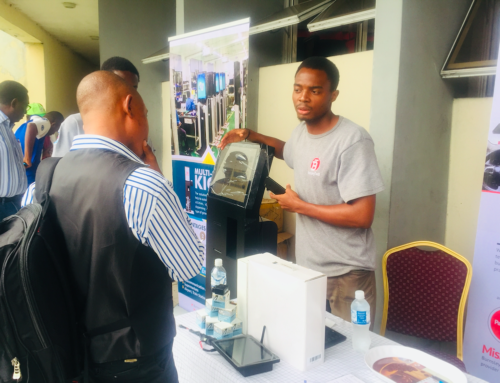Nigeria is a country endowed with human and natural resources, but this has remained relatively untapped over the years. The growth experienced since transitioning from agriculture in the late 1960’s has been driven by consumption and high oil prices.
Thereby, making the economy highly dependent on crude oil prices and production. Unlike Cameroon, the Nigerian economy is undiversified, with oil accounting for 95 per cent of exports and foreign exchange earnings.
The Nigerian economy is characterised by structural challenges that limit its ability to sustain growth, create jobs and achieve poverty reduction. These structural challenges include;
- High dependency on a single commodity for economic activities, fiscal revenues and foreign exchange – Oil.
- Raw materials and intermediate goods being imported to sustain the manufacturing sector.
- The economy is skewed towards consumption rather than investment, with gross domestic investment to gross domestic product ratio hovering at 13-14 percent.
As forecasted by some technocrats, the recent collapse of crude oil prices and production put the economy in a recession with high inflation rate. Thereby, spurring the Government of Nigeria to develop the Economic Recovery and Growth Plan aimed at mitigating the depreciating economy.
The Economic Recovery and Growth Plan (ERGP), “a Medium Term Plan for 2017 – 2020, builds on the Strategic Implementation Plan (a short term intervention plan initiated to tackle the economic decline by prioritising three policy goals: tackling corruption, improving security and re-building the economy) and has been developed for the purpose of restoring economic growth while leveraging the ingenuity and resilience of the Nigerian people – the nation’s most priceless assets.”
The Medium Term Plan is to restore growth by focusing on diversifying six priority sectors in the economy.
AGRICULTURE:
This sector was divided into four sub-sectors; 1. Crop production 2. Livestock 3. Fishing 4. Forestry. Agriculture accounted for 23.1 per cent of GDP and employed 38 per cent of the working population in 2015.
Challenges –
The sector faces four big challenges: limited access to financing and inputs for farmers; serious threat of climate change on yield; limited access of agricultural outputs to the national and international markets; and security threats to agricultural investments including cattle rustling, kidnapping, and destruction of farmlands by herdsmen.
Growth Plan –
The Federal Government launched a series of programmes to increase access to financing. There are plans to improve the condition of infrastructures (roads, irrigation and storage facilities) that limit rural farmers’ access to national and international markets. The report also highlighted the size of irrigable land being made available for prospective investors.
Targets –
Government plans to achieve a significant reduction in food imports, with the aim of becoming a net exporter of key agricultural products like rice, tomato, vegetable oil, cashew nuts, groundnuts, cassava, poultry, fish, and livestock.
Nigeria has set a bold target to become self-sufficient in tomato paste (by 2017), rice (by 2018), and wheat (by 2019/2020).
MANUFACTURING:
The sub-sectors of manufacturing with the largest impact are; 1. Agro-processing (food) 2. Light manufacturing (textile) 3. Resource processing (cement). These sectors enjoyed sustained growth in 2010-2015.
Challenges –
There is a reliance on access to foreign exchange for import of intermediate goods and raw materials. The sector suffers from limited access to credit and financial services, poor infrastructure and unreliable power supply. These challenges increase input costs and reduce the overall competitiveness and profitability of the sector.
Growth Plan –
The Federal Government plans to develop four industry group where Nigeria already possesses a clear comparative advantage; 1. Agri-business and agro-allied: building an end-to-end integrated agriculture value chain 2. Solid minerals and metals: Attract large scale investors to institutionalise world-class production standards in the country’s solid minerals sector 3. Oil and Gas related industries: encourage high value-adding downstream investments 4. Construction, light manufacturing and services: leverage housing needs, business and infrastructure needs.
Targets –
Nigeria plans to move manufacturing GDP from a dip of -7.84 per cent in 2016 to 10.6 per cent in 2020, by increasing local R&D, technology and innovation.
Solid Minerals:
The report claims that this is Nigeria’s most promising sector, with GDP contribution doubling from N52 billion in 2010 to N103 billion in 2015.
Challenges –
Mining is rudimentary and predominantly undertaken by small entrepreneurs and unlicensed, unskilled individuals, a situation that aggravates health hazards and environmental degradation. The lack of geoscience information is a barrier to investment, coupled with the lack of infrastructure and financing. Community unrest and low productivity constantly drain federal resources.
Growth Plan –
Facilitating the production of coal to fire power plants is an avenue the Federal government hopes to increase the sectors’ contribution to the economy. This plan would work alongside integrating artisanal miners into the formal sector, where everyone would be encouraged to participate in mineral processing and value addition industries that strengthen backward and forward linkages.
Targets –
The Federal government has come up with two ambitious plans; 1. Grow solid minerals GDP from N103 billion (2015) to N141 billion (2020) at an average annual growth rate of 8.54 per cent (2017-2020), 2. Produce geological maps of the entire country by 2020 (on a scale of 1:100,000).
SERVICES:
The service sector is Nigeria’s biggest contributor to the economy, growing an average of 5.8 per cent per year in 2010 – 2015. The four main services sub-sector with a keen interest to develop are: telecommunication and information and communication technology (ICT), financial services, tourism and creative industries. Telecommunication remains critical for restoring growth, considering it was the second fastest growing sector in absolute terms.
Challenges –
Disjointed and inadequate policies, weak institutional frameworks, and poor ICT infrastructures are some challenges affecting the telecommunications and ICT sub-sector. Tourism currently struggles with the low level of global awareness of the country’s tourist attractions, and lack of attractive options for vacationing. Nigeria has one of the fastest-growing entertainment industries, however, suffers from weak intellectual and property rights regime.
Growth Plan –
Achieve cutting-edge global ICT standards, develop more ICT infrastructures, and encourage local production of ICT hard and software to reduce import dependencies. The financial services hope to encourage lending to agriculture and manufacturing sectors through syndication with development banks and at affordable lending rates and minimum other charges. Promoting local content in the tourism industry will help conserve foreign exchange.
Targets –
Increase the current coverage of the active mobile broadband subscription per 100 from 20.95 to 50 per cent in 2020. In tourism, the target is to increase the number of visitors to Nigeria by 10 per cent a year (from 2017). Nigeria has an ambition plan to generate USD1 billion from exported videos by 2020.
CONSTRUCTION AND REAL ESTATE:
This industry is forecast to grow at an average of 5.39 per cent in 2017 – 2020 on the back of private and public investment, despite its disappointing growth in 2016.
Challenges –
High cost of building houses and borrowing constrains the sector. Which could be mitigated with social housing programme under a PPP arrangement.
Growth Plan –
Increase the availability of financing for the industry, while investing in technical and vocational training for craftsmen.
Targets –
Recapitalise the Federal Mortgage Bank of Nigeria from N2.5 billion to N500 billion. Construct 12 new and rehabilitate 23 existing Federal secretariat complexes in the states.
OIL AND GAS:
Divided into two sub-sectors, upstream production of crude oil and natural gas, and downstream activities like refineries and petrochemicals. The upstream sector has been the main pillar of Nigeria’s economy for decades.
Challenges –
Repeated attacks on oil pipelines and production facilities by the Niger Delta militants.
Growth Plan –
Increase upstream oil production and accompanying revenues, and develop gas production and the domestic oil refining industry to meet internal demand, and export refined products.
Targets –
Restore oil production to 2.2 mbpd in 2017 and increase it to 2.5 mbpd by 2020. Increase local refining capacity to meet domestic demand and become a net exporter of petroleum products by 2019.
In summary, the ERGP is a blueprint for recovery in the short term and a strategy for sustained growth and development in the long term. The report clearly showed that the Federal Government recognises the economic challenges facing the country, and has been working tirelessly to develop a plan to mitigate the issues faced by her citizens. These bold plans and targets are all good on paper, but may fall short of expectation when implementing. The root cause being that “you” and “I” fail to remember that change begins within. Increasing national productivity and achieving sustainable diversification can only start with “me”. From our in-house analyses, we concluded that the ERGP seeks to “promote national prosperity and an efficient, dynamic and self-reliant economy to secure the maximum welfare, freedom and happiness of every citizen on the basis of social justice and equality of status and opportunity” (Constitution of the Federal Republic of Nigeria, 1999, Chapter II, Section 16). To this end, we commend the Federal Government and all well meaning citizens and friends who teamed up to seek a solution to our economic challenges.







Leave A Comment